Crested ibises seen in Juhe River area of Yaozhou District in Tongchuan, NW China's Shaanxi
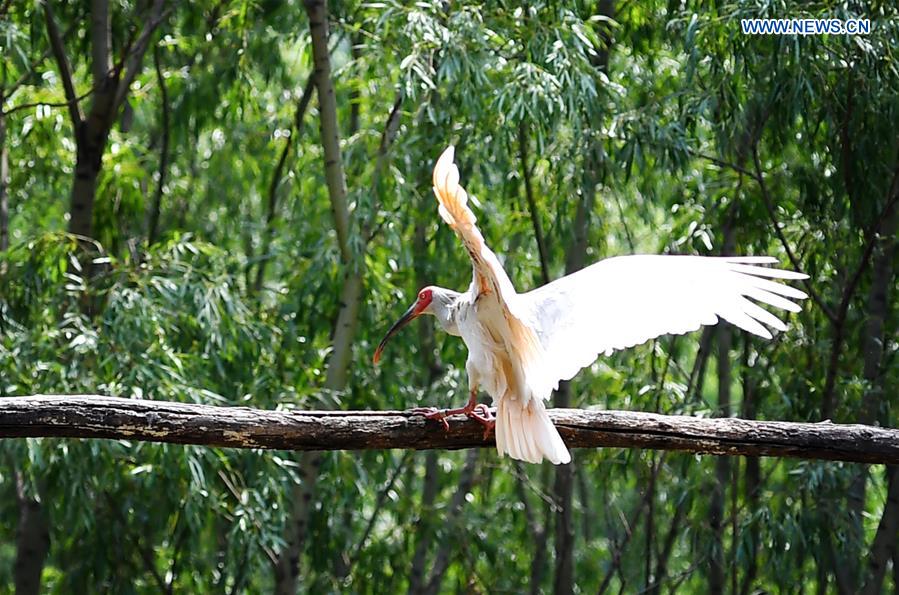
A crested ibis is seen in the Juhe River area of Yaozhou District in Tongchuan, northwest China's Shaanxi Province, June 13, 2019. Crested ibis had been assumed to be extinct before it was rediscovered in the southern foot of the Qinling Mountains in 1981. Thereafter, the southern foot of the Qinling Mountains is believed to be the most livable place for crested ibis. The Juhe River area of Yaozhou District in Tongchuan is the first releasing place in northern foot of the Qinling Mountains since 2013. A total of 62 artificially-bred crested ibis were released to the wild here, with 85 more getting born in the wild. (Xinhua/Liu Xiao)
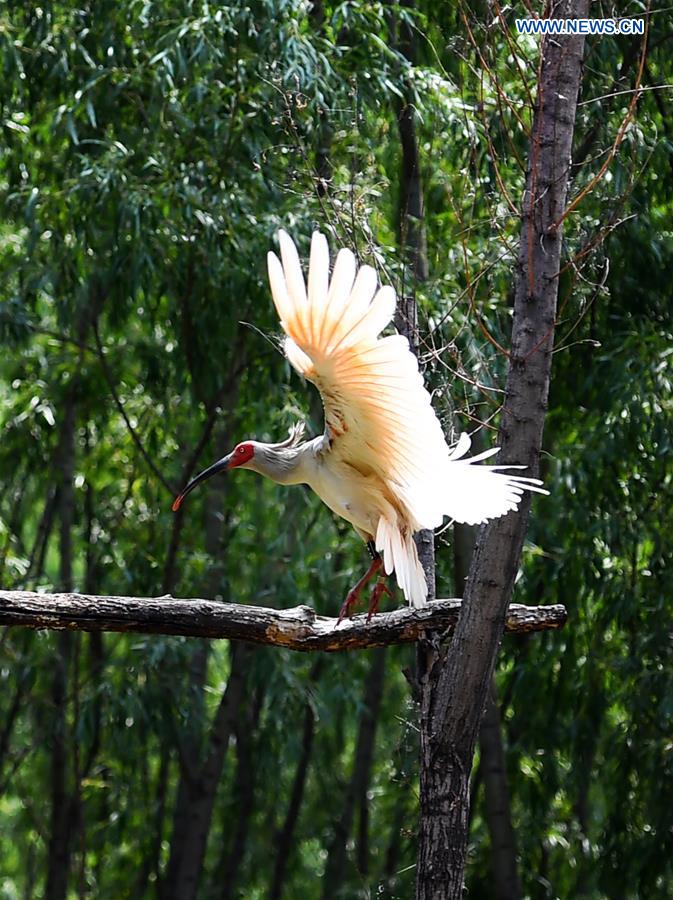
A crested ibis is seen in the Juhe River area of Yaozhou District in Tongchuan, northwest China's Shaanxi Province, June 13, 2019. Crested ibis had been assumed to be extinct before it was rediscovered in the southern foot of the Qinling Mountains in 1981. Thereafter, the southern foot of the Qinling Mountains is believed to be the most livable place for crested ibis. The Juhe River area of Yaozhou District in Tongchuan is the first releasing place in northern foot of the Qinling Mountains since 2013. A total of 62 artificially-bred crested ibis were released to the wild here, with 85 more getting born in the wild. (Xinhua/Liu Xiao)
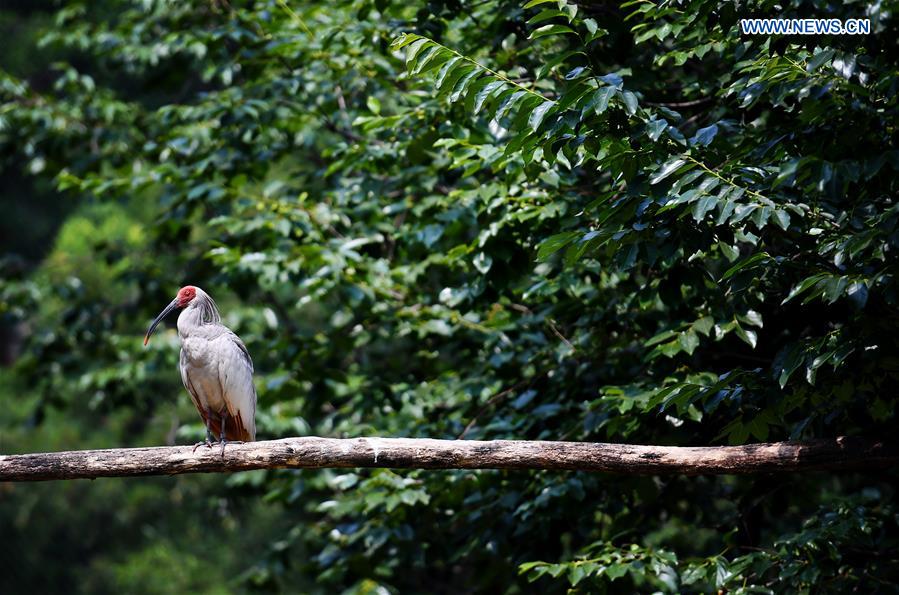
A crested ibis is seen in the Juhe River area of Yaozhou District in Tongchuan, northwest China's Shaanxi Province, June 13, 2019. Crested ibis had been assumed to be extinct before it was rediscovered in the southern foot of the Qinling Mountains in 1981. Thereafter, the southern foot of the Qinling Mountains is believed to be the most livable place for crested ibis. The Juhe River area of Yaozhou District in Tongchuan is the first releasing place in northern foot of the Qinling Mountains since 2013. A total of 62 artificially-bred crested ibis were released to the wild here, with 85 more getting born in the wild. (Xinhua/Liu Xiao)
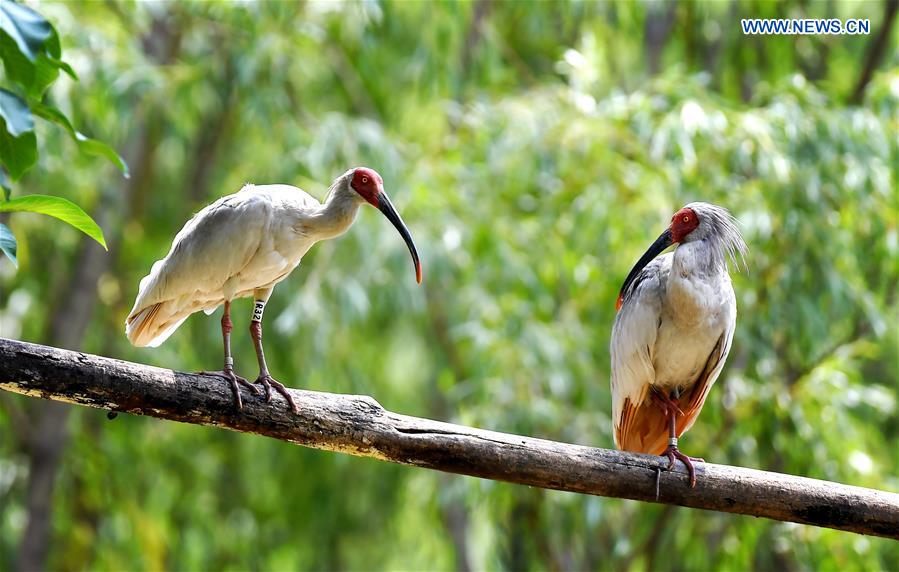
Crested ibises are seen in the Juhe River area of Yaozhou District in Tongchuan, northwest China's Shaanxi Province, June 13, 2019. Crested ibis had been assumed to be extinct before it was rediscovered in the southern foot of the Qinling Mountains in 1981. Thereafter, the southern foot of the Qinling Mountains is believed to be the most livable place for crested ibis. The Juhe River area of Yaozhou District in Tongchuan is the first releasing place in northern foot of the Qinling Mountains since 2013. A total of 62 artificially-bred crested ibis were released to the wild here, with 85 more getting born in the wild. (Xinhua/Liu Xiao)
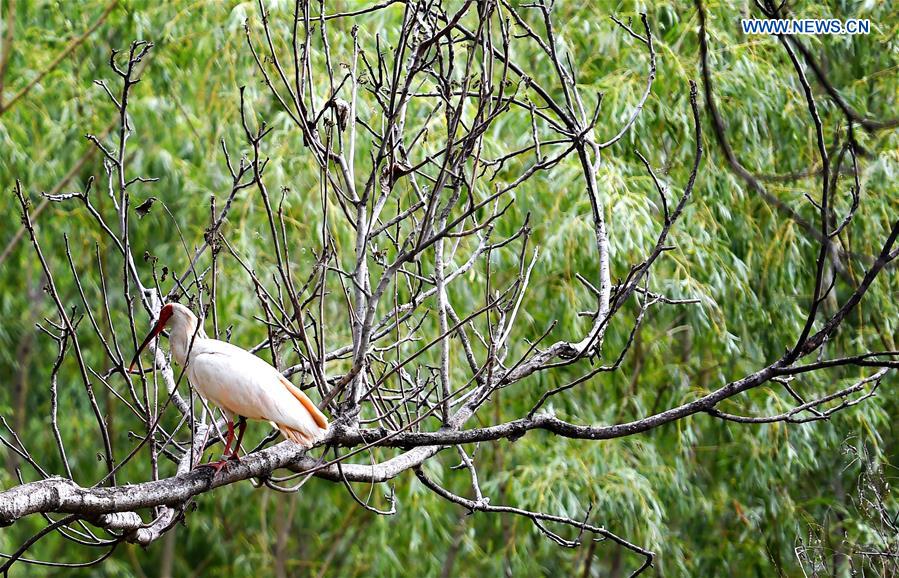
A crested ibis is seen in the Juhe River area of Yaozhou District in Tongchuan, northwest China's Shaanxi Province, June 13, 2019. Crested ibis had been assumed to be extinct before it was rediscovered in the southern foot of the Qinling Mountains in 1981. Thereafter, the southern foot of the Qinling Mountains is believed to be the most livable place for crested ibis. The Juhe River area of Yaozhou District in Tongchuan is the first releasing place in northern foot of the Qinling Mountains since 2013. A total of 62 artificially-bred crested ibis were released to the wild here, with 85 more getting born in the wild. (Xinhua/Liu Xiao)
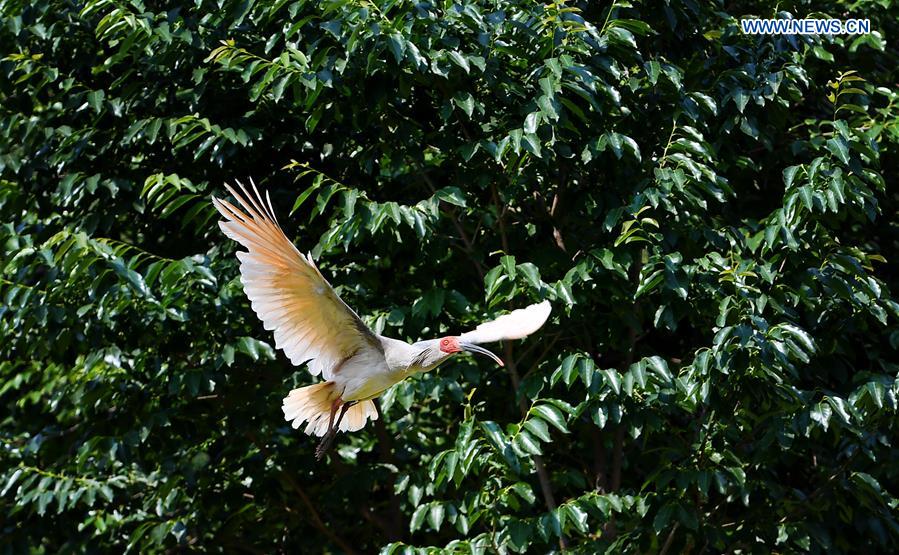
A crested ibis is seen in the Juhe River area of Yaozhou District in Tongchuan, northwest China's Shaanxi Province, June 13, 2019. Crested ibis had been assumed to be extinct before it was rediscovered in the southern foot of the Qinling Mountains in 1981. Thereafter, the southern foot of the Qinling Mountains is believed to be the most livable place for crested ibis. The Juhe River area of Yaozhou District in Tongchuan is the first releasing place in northern foot of the Qinling Mountains since 2013. A total of 62 artificially-bred crested ibis were released to the wild here, with 85 more getting born in the wild. (Xinhua/Liu Xiao)
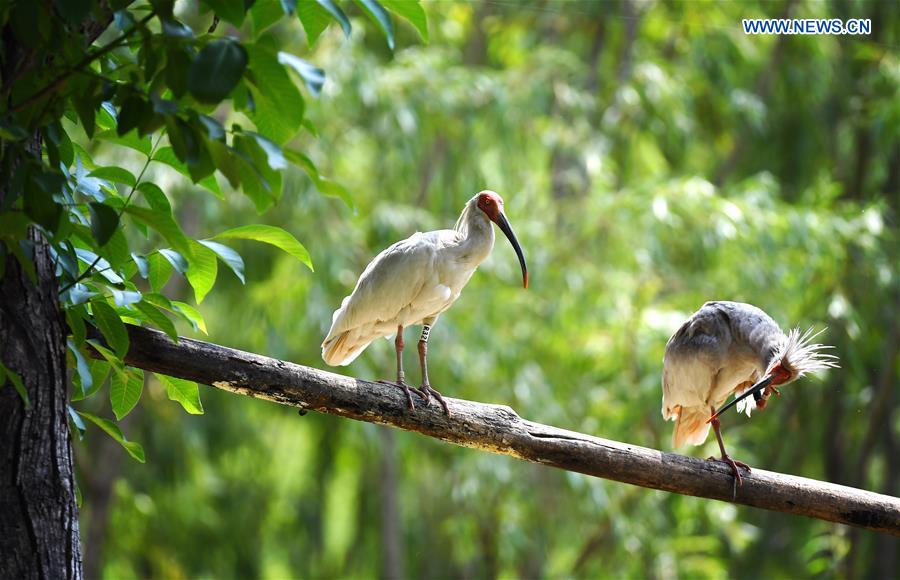
Crested ibises are seen in the Juhe River area of Yaozhou District in Tongchuan, northwest China's Shaanxi Province, June 13, 2019. Crested ibis had been assumed to be extinct before it was rediscovered in the southern foot of the Qinling Mountains in 1981. Thereafter, the southern foot of the Qinling Mountains is believed to be the most livable place for crested ibis. The Juhe River area of Yaozhou District in Tongchuan is the first releasing place in northern foot of the Qinling Mountains since 2013. A total of 62 artificially-bred crested ibis were released to the wild here, with 85 more getting born in the wild. (Xinhua/Liu Xiao)
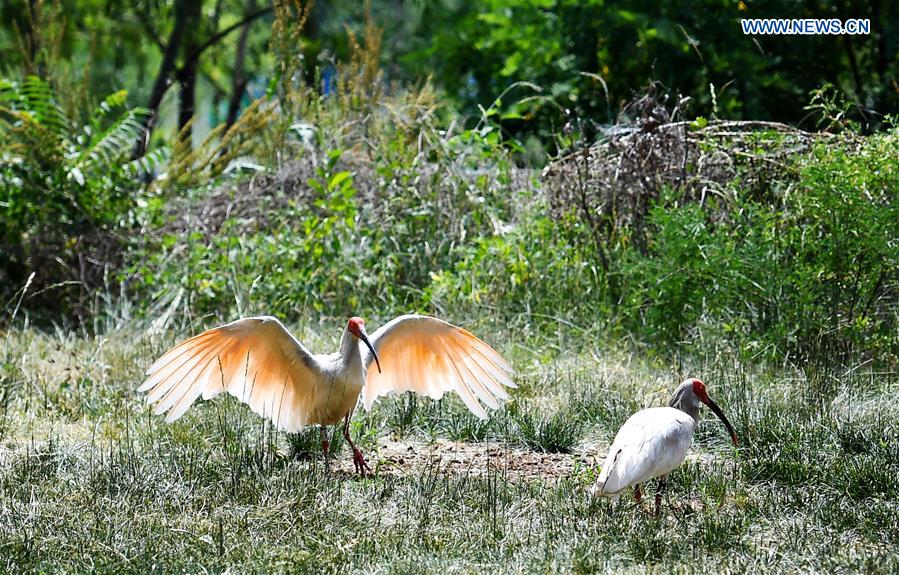
Crested ibises are seen in the Juhe River area of Yaozhou District in Tongchuan, northwest China's Shaanxi Province, June 13, 2019. Crested ibis had been assumed to be extinct before it was rediscovered in the southern foot of the Qinling Mountains in 1981. Thereafter, the southern foot of the Qinling Mountains is believed to be the most livable place for crested ibis. The Juhe River area of Yaozhou District in Tongchuan is the first releasing place in northern foot of the Qinling Mountains since 2013. A total of 62 artificially-bred crested ibis were released to the wild here, with 85 more getting born in the wild. (Xinhua/Liu Xiao)
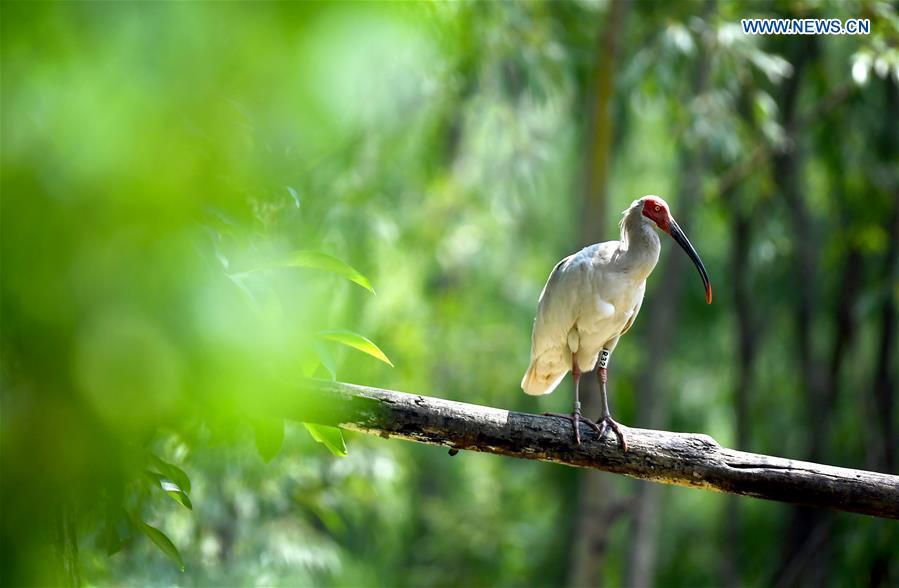
A crested ibis is seen in the Juhe River area of Yaozhou District in Tongchuan, northwest China's Shaanxi Province, June 13, 2019. Crested ibis had been assumed to be extinct before it was rediscovered in the southern foot of the Qinling Mountains in 1981. Thereafter, the southern foot of the Qinling Mountains is believed to be the most livable place for crested ibis. The Juhe River area of Yaozhou District in Tongchuan is the first releasing place in northern foot of the Qinling Mountains since 2013. A total of 62 artificially-bred crested ibis were released to the wild here, with 85 more getting born in the wild. (Xinhua/Liu Xiao)


